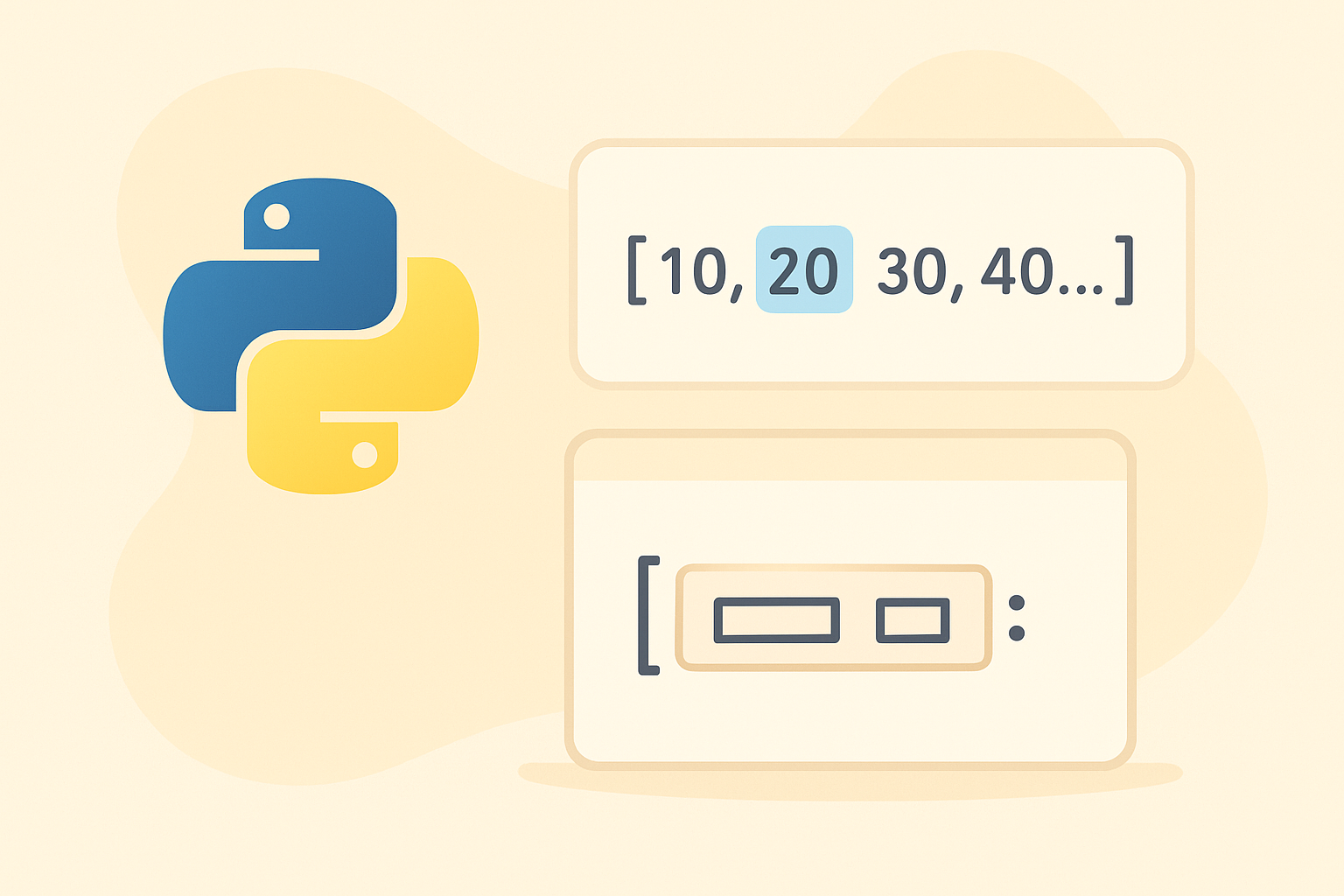In Python programming, lists are one of the most commonly used data structures. They allow you to store multiple items in a single variable and are extremely flexible when it comes to accessing or modifying data. One of the most powerful features of lists is indexing and slicing. In this article, we will explore how Python list indexing and slicing work, with examples and best practices to help you write cleaner and more efficient code.

What is a Python List?
A list in Python is an ordered, mutable collection that can store different data types such as strings, integers, floats, or even other lists. Lists are created using square brackets [].
# Example of a Python list fruits = ["apple", "banana", "cherry", "orange"] print(fruits)
Understanding Indexing in Python Lists
Indexing allows you to access specific elements in a list using their position. Python uses zero-based indexing, which means the first element is at index 0, the second element is at index 1, and so on.
# Access elements by index fruits = ["apple", "banana", "cherry", "orange"] print(fruits[0]) # Output: apple print(fruits[2]) # Output: cherry
Negative Indexing
Python also supports negative indexing, which starts counting from the end of the list. The last element has an index of -1, the second last is -2, and so on.
# Access elements using negative indexes print(fruits[-1]) # Output: orange print(fruits[-2]) # Output: cherry
IndexError Example
If you try to access an index that does not exist in the list, Python will raise an IndexError.
# Example of IndexError
try:
print(fruits[10])
except IndexError:
print("Index out of range!")
What is List Slicing?
Slicing is used to access a subset of a list by specifying a range of indexes. The syntax for slicing is:
list[start:end:step]
start: The index where slicing begins (inclusive).end: The index where slicing stops (exclusive).step: The interval between elements (optional).
Basic Slicing Example
numbers = [10, 20, 30, 40, 50, 60, 70] print(numbers[1:4]) # Output: [20, 30, 40]
Omitting Start or End
You can omit the start or end index to slice from the beginning or until the end of the list.
# Slice from the beginning to index 3 print(numbers[:4]) # Output: [10, 20, 30, 40] # Slice from index 2 to the end print(numbers[2:]) # Output: [30, 40, 50, 60, 70]
Using Step in Slicing
The step parameter allows you to skip elements while slicing.
# Slice every second element print(numbers[::2]) # Output: [10, 30, 50, 70] # Reverse the list using slicing print(numbers[::-1]) # Output: [70, 60, 50, 40, 30, 20, 10]
Practical Examples of Indexing and Slicing
Example 1: Get the Last Three Elements of a List
data = [1, 3, 5, 7, 9, 11, 13] last_three = data[-3:] print(last_three) # Output: [9, 11, 13]
Example 2: Reverse a String Stored in a List
words = list("Python")
reversed_word = words[::-1]
print("".join(reversed_word)) # Output: nohtyP
Example 3: Modify Elements Using Index
Since lists are mutable, you can change elements at specific indexes.
colors = ["red", "blue", "green"] colors[1] = "yellow" print(colors) # Output: ['red', 'yellow', 'green']
Common Mistakes and Tips
- Remember that slicing does not modify the original list — it returns a new list.
- Indexing outside the valid range causes an
IndexError. - Using
[::-1]is a fast way to reverse a list in Python.
Conclusion
Understanding Python list indexing and slicing is essential for efficient data manipulation. Whether you are analyzing datasets, processing user input, or building algorithms, knowing how to access, modify, and slice lists will save you time and make your code cleaner. Practice these techniques with different data sets to master list operations in Python.
For more detailed documentation, visit the official Python docs:
Python Data Structures Documentation.

